Grocery Guides
21 Best Fruits and Vegetables to Juice

Curious about the best fruits and vegetables to juice? Making healthy juices at home guarantees you control the ingredients in your tasty combination. Juicing makes getting the nutrients, vitamins, and minerals your body needs more convenient and lets you explore the flavor-packed fusion of your favorite produce.
We’ll delve into the most used and best fruits and vegetables readily available for juicing. We’ll look at the best juicing combinations, homemade juice recipes, and juicing tips for beginners. Break out that juicer, and let’s craft some delicious fruit and vegetable juice medleys!
Note: The daily serving recommendation for most fruit juice is 1 cup. Consider this when adding more fruit juice.
Table of contents
- Apples
- Grapes
- Pineapple
- Berries
- Pears
- Watermelon
- Peaches
- Citrus
- Mango
- Pomegranate
- Cantaloupe
- Kale
- Celery
- Carrots
- Beets
- Spinach
- Cucumber
- Tomatoes
- Swiss chard
- Ginger
- Wheatgrass
1. Apples

Apples are one of the best and most popular fruits used in juices. There are many varieties, and you can choose your favorite based on your preference for tartness or sweetness.
Fresh apples are best, but they can continue to ripen after picking. Store your fruit in a separate place in your refrigerator, and they’ll last one to two months or longer.
Serving suggestions
Four to 8 ounces of apple juice is recommended. Start with small amounts of apple juice and adjust to taste when combined with other juices.
Flavor profile
Apples are sweet or tart or a bit of both. It depends on the variety of apples you choose.
Seasonal availability
Apples are more abundant locally in the fall but may be purchased year-round at grocery stores.
Flavor combinations
Apples pair well with almost all other fruits and vegetables, making them one of the best fruits to juice and create delicious combinations. Apple carrot juice is a popular one.
2. Grapes

Grapes come in various varieties and are great for juicing. The Concord grape is best known for making ready-to-drink grape juice, but you can use your favorite variety.
Serving suggestions
Four to 10 ounces is the recommended amount for most fruit juices, so remember this when combining different flavors.
Flavor profile
Grapes have a sweet-sour taste. It has to do with the acid percentage in the fruit, which, if high, counteracts the sweetness.
Seasonal availability
Grapes are available in grocery stores year-round.
Flavor combinations
Grape and orange flavors pair well together. Apple grape carrot juice is a great combo, too!
3. Pineapple

Pineapples are tropical fruits that are a popular part of many juice recipes. They are especially sweet, so add pineapple to your juices in small amounts at a time so they aren’t too sweet with other fruits.
Serving suggestions
A serving of pineapple juice is usually 1 cup, but because of the sugar content, it should be only half of your daily fruit intake.
Flavor profile
Pineapples have a sweet and tangy flavor. Their juice comes from the pulp, which can sometimes be fibrous in texture.
Seasonal availability
Due to global trading, pineapple is typically readily available throughout the year. The peak harvest season is March through July.
Flavor combinations
The juices of lemon, lime, peaches, papaya, raspberries, strawberries and mango mix well with pineapple juice.
4. Berries

Berries come in many varieties and are some of the healthiest foods you can eat. Their vibrant and enticing colors make great additions to your homemade juice. We’ll concentrate on blueberries, strawberries, raspberries and cranberries, which are commonly seen in the best fruit juices.
Serving suggestions
One cup of berry juice is the recommended daily allowance unless mixed with other juices.
Flavor profile
Berries are sweet and tart, sometimes with an earthy taste, depending on their age.
Seasonal availability
Summer is the most common season for fresh berries, but they can be found in grocery stores year-round.
Flavor combinations
Orange and apple juices mix well with many berry varieties.
5. Pears

Pears are packed with nutrients, tasty and come in multiple varieties. They are juicy and sweet, so they are terrific when mixed with more tart or bland flavors.
Serving suggestions
It is recommended to have ¾ to 1 cup of juice daily, including all juices.
Flavor profile
Pears have a sweetness like honey and a hint of apple flavor.
Seasonal availability
Pears are available year-round, but the harvest occurs from August to February.
Flavor combinations
Apple and pear, along with many other fruits, taste refreshing together. Spices like nutmeg, ginger and cinnamon complement pear juices.
6. Watermelon

Watermelons are the fruit of summer! With a water content of 92%, cold watermelon juice is especially refreshing on a hot day.
Serving suggestions
You should drink only about a cup of watermelon juice daily, but start with a small amount in your juicer and adjust to taste after adding other ingredients.
Flavor profile
Watermelon has a watery and slightly grainy texture. It has a combination of sweet, bitter and sour flavors depending on factors such as ripeness.
Seasonal availability
In the United States, the watermelon season is between May and September, with the peak in July and August. For the best flavor and perfectly ripe fruit, look for a creamy yellow spot where the melon sat on the soil.
Flavor combinations
Fresh herbs, coconut water or lime mixed with watermelon juice is a refreshing treat.
7. Peaches

Peaches make a perfect summer fruit juice! They are super sweet.
Serving suggestions
Limit your peach juice intake to 1 to 2 cups daily, less if mixed with other juices.
Flavor profile
Peach juice has a sweet but tart flavor that is more acidic than the whole fruit.
Seasonal availability
The peak season for peaches is May to September but they can be found in most grocery stores year-round.
Flavor combinations
Berries and citrus fruits pair well with peaches. Add honey and a splash of lime juce to peaches to make a delicious fusion of flavors
8. Citrus

Citrus, such as oranges, lemons, limes and grapefruit, are some of the best fruits for juicing. The tartness of the citrus fruit juice makes a flavorful addition to many of the sweeter fruits, giving them a “zing” of freshness.
Serving suggestions
No more than 2 cups of fruit juice of any kind daily is suggested.
Flavor profile
Highly sweet, with moderate bitterness and acidity. They taste sweet and sour.
Seasonal availability
The peak season for citrus fruit is from November to April, but most varieties can be found in the supermarket year-round.
Flavor combinations
Citrus juices make flavorful additions to many fruit and vegetable juice blends. Orange juice on its own is a favorite of many people. Try apple, carrot and lime juice; carrot, lemon and pineapple juice; or a mix of melons, grapefruit and carrot.
9. Mango

Mangoes are called the “king of the fruits” because they are one of the healthiest of them all. They have a wonderful taste and offer more vitamins, minerals and antioxidants than others.
Serving suggestions
The recommended serving suggestion is 1 cup daily.
Flavor profile
Mangoes have a tropical flavor that is sweet, tangy and refreshing. Mango juice can be clear and thin or pulpy and thick depending on your preference.
Seasonal availability
Peak mango season runs from May to September, though mangoes can be imported to your grocery store year-round.
Flavor combinations
Mangoes are delicious when mixed with other tropical juices. Try pineapple, peach and mango for an explosion of flavor!
10. Pomegranate

In addition to the wonderful health benefits of pomegranates, the juice is a deep red color and makes beautiful drinks. Only the seeds inside a pomegranate are eaten or juiced.
Serving suggestions
The juice from half a pomegranate is the recommended serving size.
Flavor profile
Pomegranate juice has a complex flavor that can be sweet, tart, sour, raw, bitter, earthy, or acidic.
Seasonal availability
As a fall fruit, the peak season for pomegranates is September through November.
Flavor combinations
Pomegranate juice mixed with sugar and lemon juice makes homemade grenadine syrup. Grenadine and club soda make a refreshing spritzer.
11. Cantaloupe

Cantaloupe is a rough-skinned, tan-colored melon with orange flesh. Only the inside is eaten or juiced. It makes a slightly thicker liquid when juiced with a blender and packs a punch of flavor.
Serving suggestions
One cup of juice is the recommended serving size.
Flavor profile
Cantaloupes taste sweet and slightly floral when the flesh is soft and ripe.
Seasonal availability
The best time for cantaloupe is from June to October.
Flavor combinations
Cantaloupe, mint and lemon or lime juice mixed has a terrific flavor!
Grab it now on Instacart:
12. Kale

Kale is a “superfood” with tremendous health benefits. Choose firm, dry, dark green, small- to medium-sized leaves for juicing.
Serving suggestions
One cup of kale in juices is the recommended serving.
Flavor profile
Kale is bittersweet, pungent, peppery and earthy.
Seasonal availability
Autumn is the best time to harvest kale, as the leaves should be small to medium.
Flavor combinations
Apple, cucumber, lemon, ginger and kale makes a perfect combo of delicious juices! Add kale to any fruit juice to add extra nutrient intake.
13. Celery

Celery is low-calorie and grows in long stalks with leaves at the ends like flowers. Juicing celery in a blender adds pulp and fiber to your juices. Both the stalks and the leaves can be juiced.
Serving suggestions
One cup of celery juice is the recommended serving.
Flavor profile
Celery is crunchy and has a peppery taste.
Seasonal availability
Available year-round at most grocery stores
Flavor combinations
You can drink celery juice alone or combine it with kale, spinach, apple, coconut water and ginger.
14. Carrots

Carrots are one of the best vegetables for juicing, either alone or mixed with other ingredients. The bright orange color makes it appealing, and the flavor is delicious.
Serving suggestions
One cup of carrot juice is the recommended serving.
Flavor profile
Carrot juice is sweet and smooth, with a slightly bitter earthy undertone.
Seasonal availability
Carrots are freshest in early spring and fall but readily available year-round.
Flavor combinations
Carrots pair well with apples, pineapple, oranges and ginger.
15. Beets

Beets are a knobby, blood-red root vegetable that is nutritionally dense and surprisingly delicious. Their deep red color makes attractive juices and adds a zingy flavor to any drink.
Serving suggestions
One cup of beet juice is the recommended serving size.
Flavor profile
Beets have a sweet, rich flavor with a hint of earthiness.
Seasonal availability
The best season for beets is mid-summer to late fall but they can be found year-round in supermarkets.
Flavor combinations
Some of the best beet juice blends include citrus fruits, berries, other root veggies and leafy greens. Adding herbs and spices like ginger, mint or cinnamon can enhance the flavor of beet juice.
16. Spinach

Spinach is a leafy green vegetable that adds a power-packed punch of nutrition to your juices. Its deep green color is enticing and tasty, and it goes well with many other juices.
Serving suggestions
One cup of spinach juice is the recommended serving.
Flavor profile
Spinach has a crisp, clean, mildly sweet with a slight earthy undertone.
Seasonal availability
The peak season for growth is winter, but you can find spinach year-round in grocery stores.
Flavor combinations
Spinach, apple, lemon and celery juiced together has an incredible flavor. Add a teaspoon of honey for a sweeter juice.
17. Cucumber

Cucumbers come from vine plants that creep along the ground. They are long, cylindrical green fruits commonly thought to be vegetables. You can eat the entire cucumber, including the skin and flesh, and it can be juiced entirely to make a refreshing and hydrating boost.
Serving suggestions
When mixing with other juices, start with a small amount of cucumber juice and add more to your taste preferences.
Flavor profile
Cucumbers have a fresh, naturally sweet, light, and mild flavor.
Seasonal availability
Cucumbers grow in the late spring through the early fall but can be found year-round in supermarkets.
Flavor combinations
Cucumber is one of the best bases for vegetable juices. It’s great mixed with celery, watermelon, apple, carrot, pineapple and grape juice.
18. Tomatoes

Tomatoes come in many varieties and can have unique flavors. Although commonly known as a vegetable, they are actually fruits. You can use the entire fruit in juices. Homemade tomato juice has a distinctively fresh taste and you can control the amount of salt added.
Serving suggestions
One cup serving size is recommended.
Flavor profile
The balance of sugar and acid in tomatoes determines their flavor. Depending on the variety chosen, tomatoes can be sweet, tart or tangy.
Seasonal availability
Tomatoes are freshest from May through October but can be found in supermarkets year-round.
Flavor combinations
You can add a multitude of juice flavors to tomato juice. Berries, watermelon, pear, cucumber, cantaloupe and a variety of herbs are great combinations.
19. Swiss chard

Swiss chard has large, dark green leaf blades with red, white or yellow ribs and stems, depending on the variety. Both the leaf and stalk can be eaten, but the leaf is most often used in juicing.
Serving suggestions
One cup servings are recommended.
Flavor profile
Mild, sweet, earthy and somewhat bitter.
Seasonal availability
July to November is the best time for fresh Swiss chard, but you can find it year-round.
Flavor combinations
Citrus, kale, carrot, apple and ginger are all great ingredients to juice with Swiss chard.
20. Ginger

Ginger has a spicy kick that makes a great addition to any other juice. You do not need to peel the ginger before you juice it.
Serving suggestions
3-4 grams of ginger a day is the recommended serving to juice.
Flavor profile
Ginger is spicy, peppery, sweet and somewhat pungent.
Seasonal availability
Available all year.
Flavor combinations
Citrus and apple combinations are popular, but you can add ginger to almost any other juice depending on your taste preference.
21. Wheatgrass

Wheatgrass is considered a super potent health food. It is a healthy addition to juices and has a deep green color, which makes the liquid look and taste refreshing when mixed with other fruits and vegetables.
Serving suggestions
1-4 ounces added to juice combinations is the recommended serving size. Mix 8 ounces of water with fresh wheatgrass or powder if making wheatgrass juice alone.
Flavor profile
Grassy, earthy, bitter or sweet, depending on how prepared.
Seasonal availability
You can get wheatgrass year-round at grocery stores. You can also grow your own at home.
Flavor combinations
Try a combination of orange, lime, ginger, turmeric and coconut water with wheatgrass for a blend that mellows its strong flavor.
Homemade juice recipes
Check out these homemade juice recipes to help kick-start your juicing journey:
- Ginger Juice Recipe with Honey and Lemon
- Vibrant Green Kale Juice
- Refreshing Watermelon Juice
- Beetroot Juice
- Cucumber, Apple and Spinach Juice
- Carrot, Pineapple, Orange Juice
Tips for juicing
While it may be tempting to throw your produce into the juicer right away, it’s important to do a little prep work first. Here are the essential steps to prepare your produce for juicing:
- Wash your hands for 20 seconds with soap and water before and after preparing your fresh ingredients.
- Cut away any damaged or bruised areas on your fresh fruits and raw vegetables.
- Rinse your fruits and vegetables before peeling so you don’t transfer any dirt or harmful bacteria to the inside of the produce.
- Rub your produce gently while holding it under running water. No soap is necessary.
- Use a sturdy vegetable brush to clean firm produce.
- Dry the fruits or vegetables with a cloth or paper towel.
- Produce should be stored in the refrigerator.

What kind of juicer is best to use?
The extraction method of juicing matters. There are three main types of juicers to think about:
- Centrifugal: This type of juicer pushes the produce through a screen that cuts it and then spins it. The centrifugal force pulls the juice out of the pulp. Centrifugal juicers are less expensive and typically faster than others. This type of machine gets hot, but it doesn’t get hot enough to destroy the enzymes in the fruits and vegetables being juiced.
- Masticating: This kind of juicing device works better on fibrous produce due to its grinding action. After grinding, the pulp is pushed against a screen, separating the solids from the juice. One thing to consider with this type of juicer is that it requires the raw fruits and veggies to be cut into small pieces. These juicers are also more expensive.
- Hydraulic cold press: This juicer uses hydraulic pressure to pulverize the juice out of the produce. There is minimal heat associated with this type of juice machine, but they are harder to operate and are very expensive.
Consuming and storing fresh juice
Why make just enough juice for one day? Make enough for a second serving so you can get right to the tasty experience the next day!
- You can store fresh fruit and veggie juices for 24-48 hours.
- If you’ve used citrus fruits in your juice, you may be able to extend the time to 72 hours.
- You should store all juice in an air-tight or vacuum-sealed container.
Juice it up with Instacart
Whether you crave leafy green powerhouses like spinach or the sweet tropical taste of mangoes, Instacart can help you effortlessly stock up on the best fruits and vegetables for juicing.
Simply add Instacart to your digital apps and order from your favorite grocery stores to enjoy the convenience of fresh produce delivered right to your doorstep.
Most Recent in Grocery Guides

Grocery Guides
15 Best Cheeses for Your Next Charcuterie Board
Let’s face it: The heyday of the store-bought party platter is long gone. Now, the duties of a good host often include curating an impressive charcuterie board. But where do you begin? Charcuterie boards typically…
Jan 21, 2025
Grocery Guides
Guide to Movie Night Snack Delivery
Planning the perfect movie night means getting cozy, choosing a favorite film and gathering all the right treats. With movie night snack delivery, you can skip the hassle of a grocery run and have delicious…
Dec 19, 2024
Grocery Guides
9 Best Cheese for Pasta: Melting, Grating & More Explained
The right cheese can elevate your pasta instantly, but choosing the best cheese for pasta can be tricky with so many options. Whether you’re aiming for a creamy, melty finish or a sharp, savory kick…
Dec 19, 2024
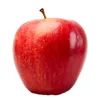

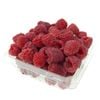
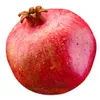
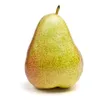
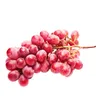


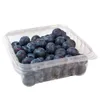
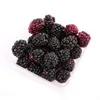


 Squash – All You Need to Know | Instacart Guide to Fresh Produce
Squash – All You Need to Know | Instacart Guide to Fresh Produce  Ghost Pepper – All You Need to Know | Instacart Guide to Fresh Produce
Ghost Pepper – All You Need to Know | Instacart Guide to Fresh Produce  Sprouts – All You Need to Know | Instacart Guide to Fresh Produce
Sprouts – All You Need to Know | Instacart Guide to Fresh Produce 

